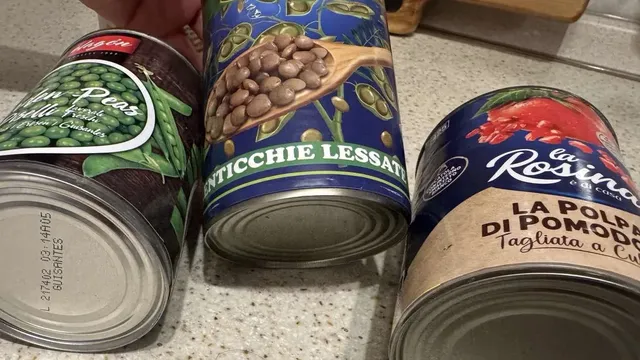Metal cans are considered safe packaging. However, it is necessary to study the possible interactions between these containers and food. This has been done by Spanish researchers from the University of Santiago de Compostela.
Tin cans are part of every survival kit and many of them are an indispensable part of university life. When we don't feel like cooking or don't have time, they are the best option. And they are indispensable if we go camping.
We are talking, of course, about canned food, which allows different types of food and beverages to be stored in perfect nutritional and organoleptic conditions.
This method of storage has been used for decades. Among its many advantages is that it allows us to store food in our cupboards for years, thanks to its long shelf life.
For this reason, canned food is traditionally associated with a reliable way of storing food.
From a chemical point of view, however, it is necessary to study in more detail the possible interactions between the packaging and the food it contains in order to guarantee their safety.
Generally, unless we notice bulges or traces of rust on the cans, we assume that we can rest assured.
Dents are a cause for concern, as they can damage the integrity of the can to the point where small perforations appear, which are not always visible, facilitating the entry of bacteria and therefore contamination of the food inside the can.
What is usually overlooked or, at best, not given enough consideration are food safety issues related to the components of the can, such as the potential increase in dangerous substances, which would be like adding seasoning to the oil that comes with canned tuna.
What substances are we talking about? And above all, what risks are we exposed to?
Metal packaging usually contains polymer coatings that act as a barrier between the food and the metal. This coating prevents the can from corroding and preserves the organoleptic properties and quality of the food.
However, some of its components can enter the food through a process called "migration."
This can affect the quality of the product and, in some cases, pose a potential risk to the health of the consumer, either through ingestion in large quantities or through cumulative exposure throughout life via food.
The FoodChemPack group (Research, Development and Assessment of the Chemical Safety of Food and Materials in Contact with Food) at the Faculty of Pharmacy of the University of Santiago de Compostela (USC), Spain, is studying the coatings of metal packaging for beverages and canned foods within several projects (MIGRAEXPO, MIGRACOATING, BACFood4Expo, and ACHED), in collaboration with the Spanish Agency for Food Safety and Nutrition (Aesan).
In recent years, we have found that many coatings contain epoxy resins based on bisphenol A diglycidyl ether, synthesized from epichlorohydrin and bisphenol A (BPA), an endocrine disruptor that affects the hormonal system.
This contributes to the development of metabolic diseases such as diabetes or obesity and can affect the reproductive system, among other harmful effects.
In 2011, the danger of this compound led to its ban in baby pacifiers.
European authorities are increasingly reducing the maximum amount of bisphenol to which the general population should be exposed. To such an extent that in December 2024, the European Commission banned the use of bisphenol A and its derivatives in materials intended to come into contact with food.
In the beverages tested (alcoholic, energy, soft drinks, and mineral water), the migration of these bisphenol A derivatives was found to be low.
On the other hand, higher levels of migration were measured in canned foods, especially those with a high fat content.
For example, in canned foods such as tuna with tomato, escabeche, or oil, higher concentrations of another compound called cyclohexyl diphenyl ether were found compared to tuna in its natural form.
Unlike bisphenol A, this compound is not yet regulated due to a lack of toxicological information.
For all these reasons, it is considered a bad habit to season pasta or salads with the liquid from cans, as this may increase our exposure to these substances.
In addition, it has been observed that reheating food directly in the can, a practice associated with specific situations such as camping, may increase the migration of these compounds.
Heat accelerates the transfer of substances from the inner layer of the packaging to the food, which can increase health risks. | BGNES

 Breaking news
Breaking news
 Europe
Europe
 Bulgaria
Bulgaria







